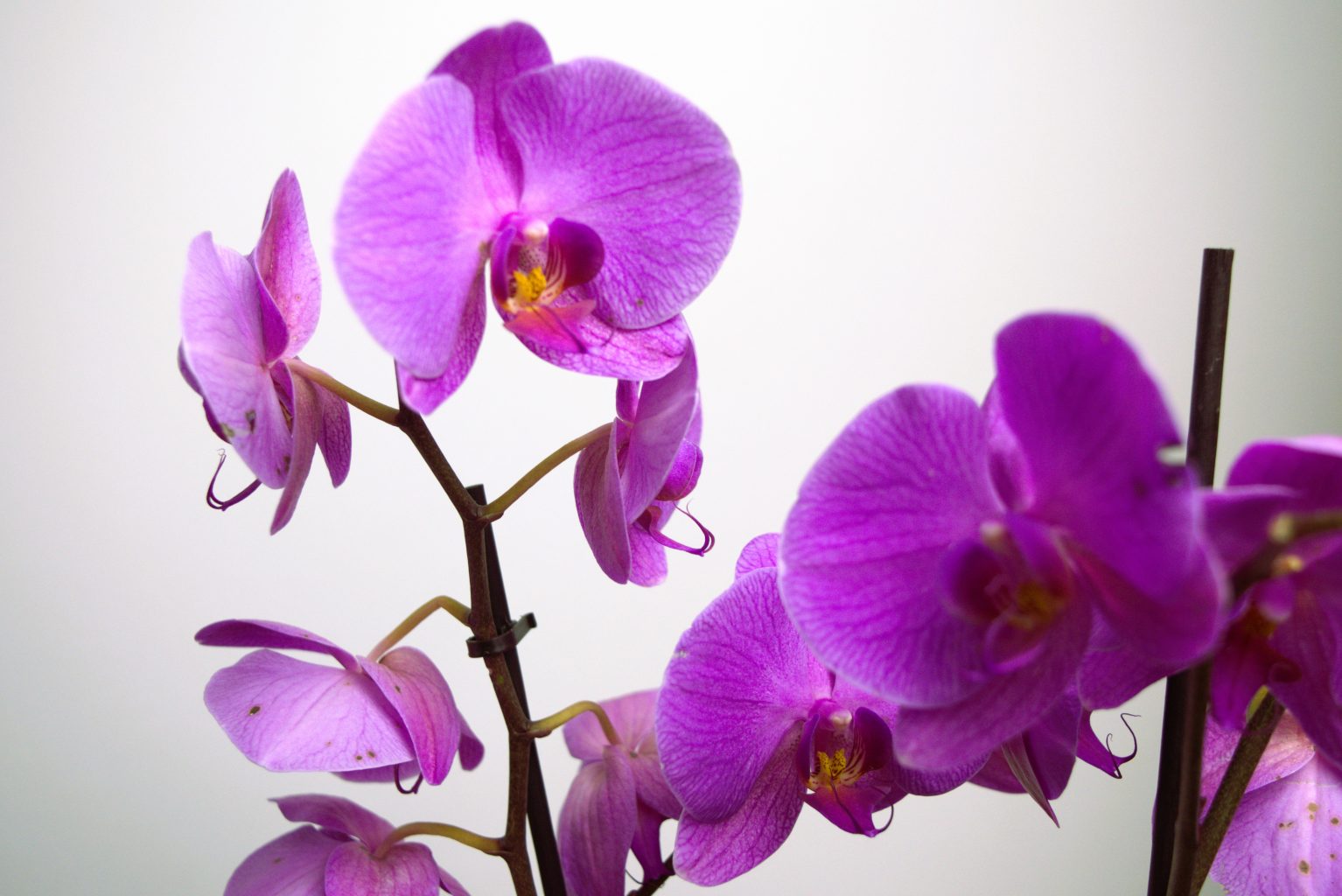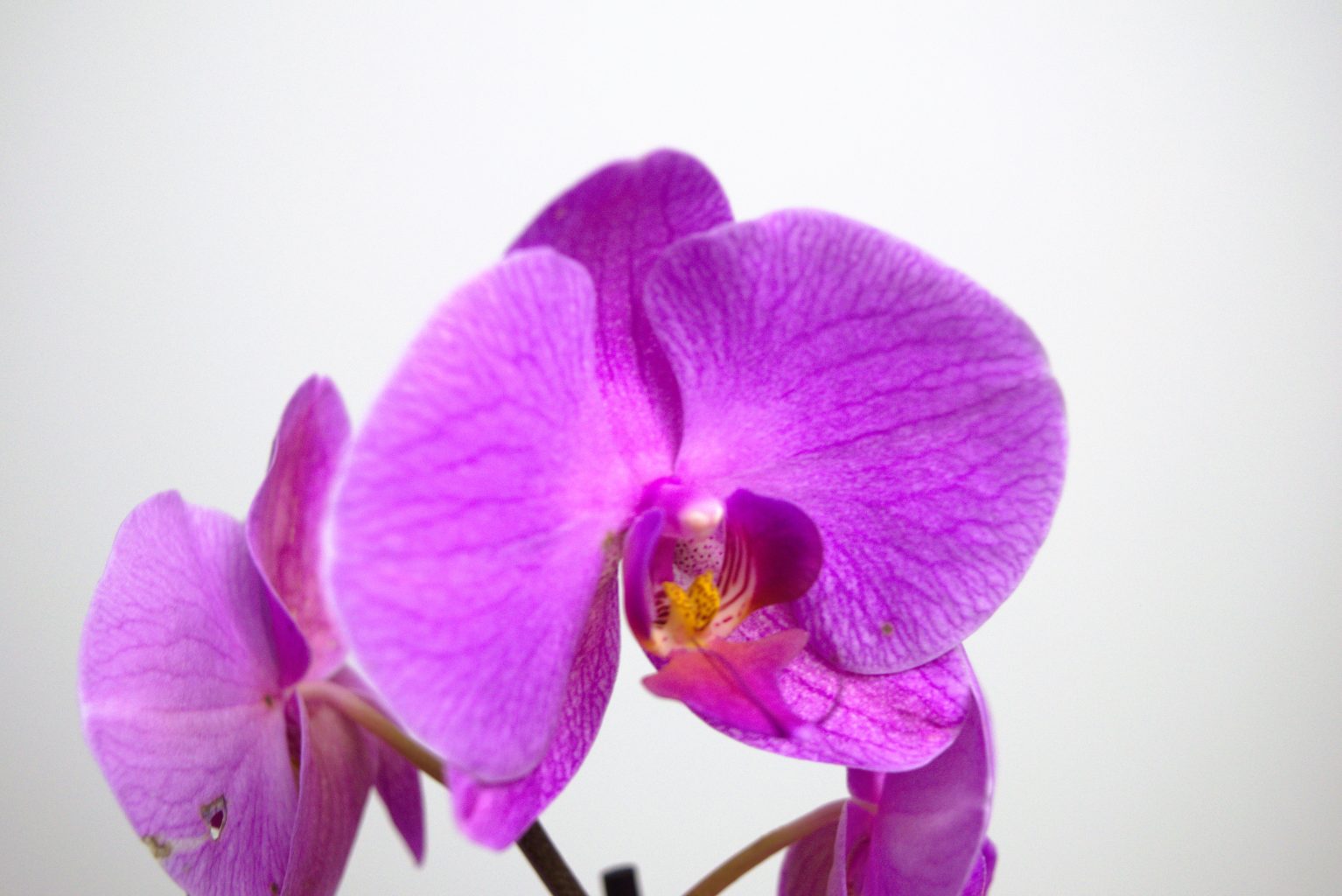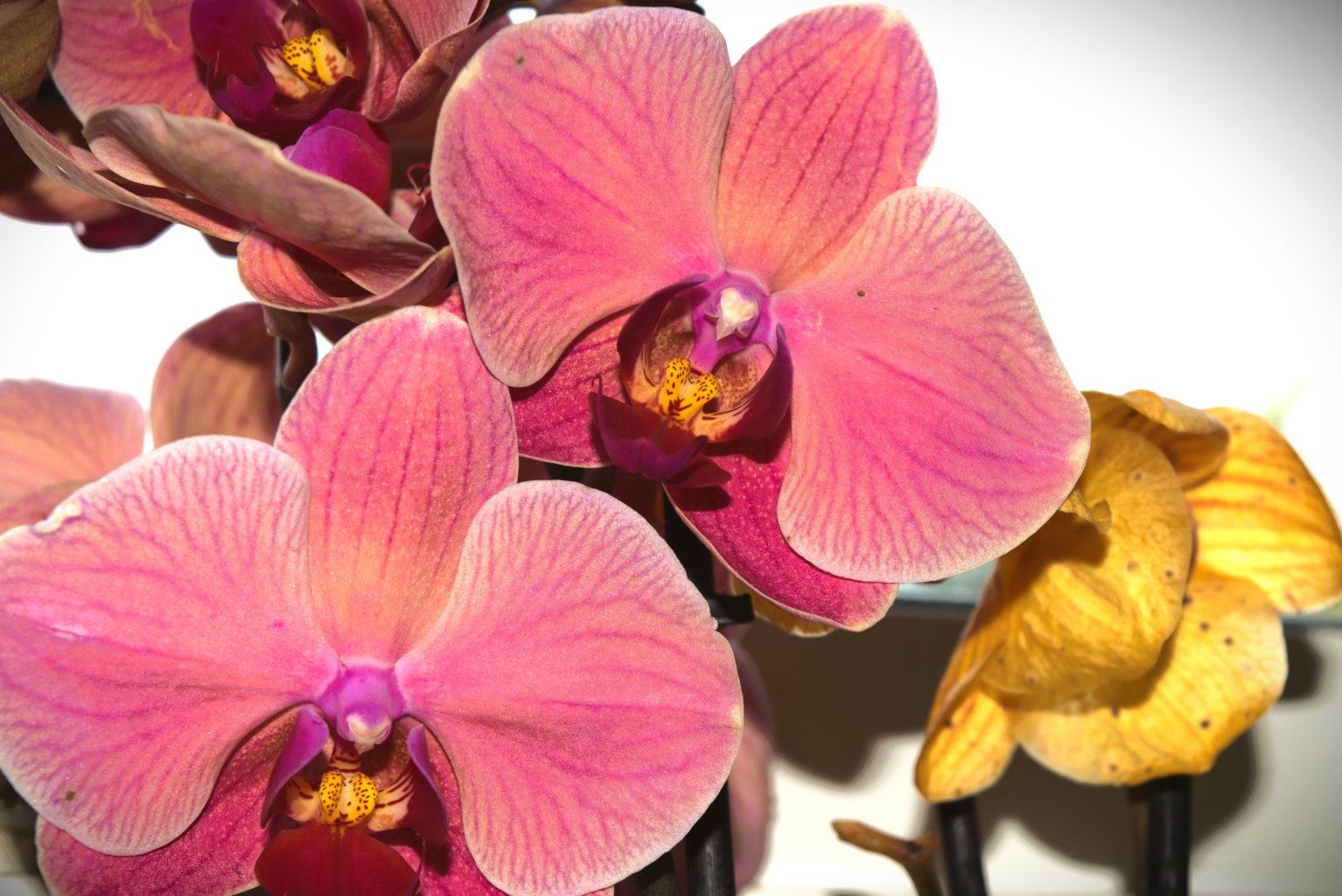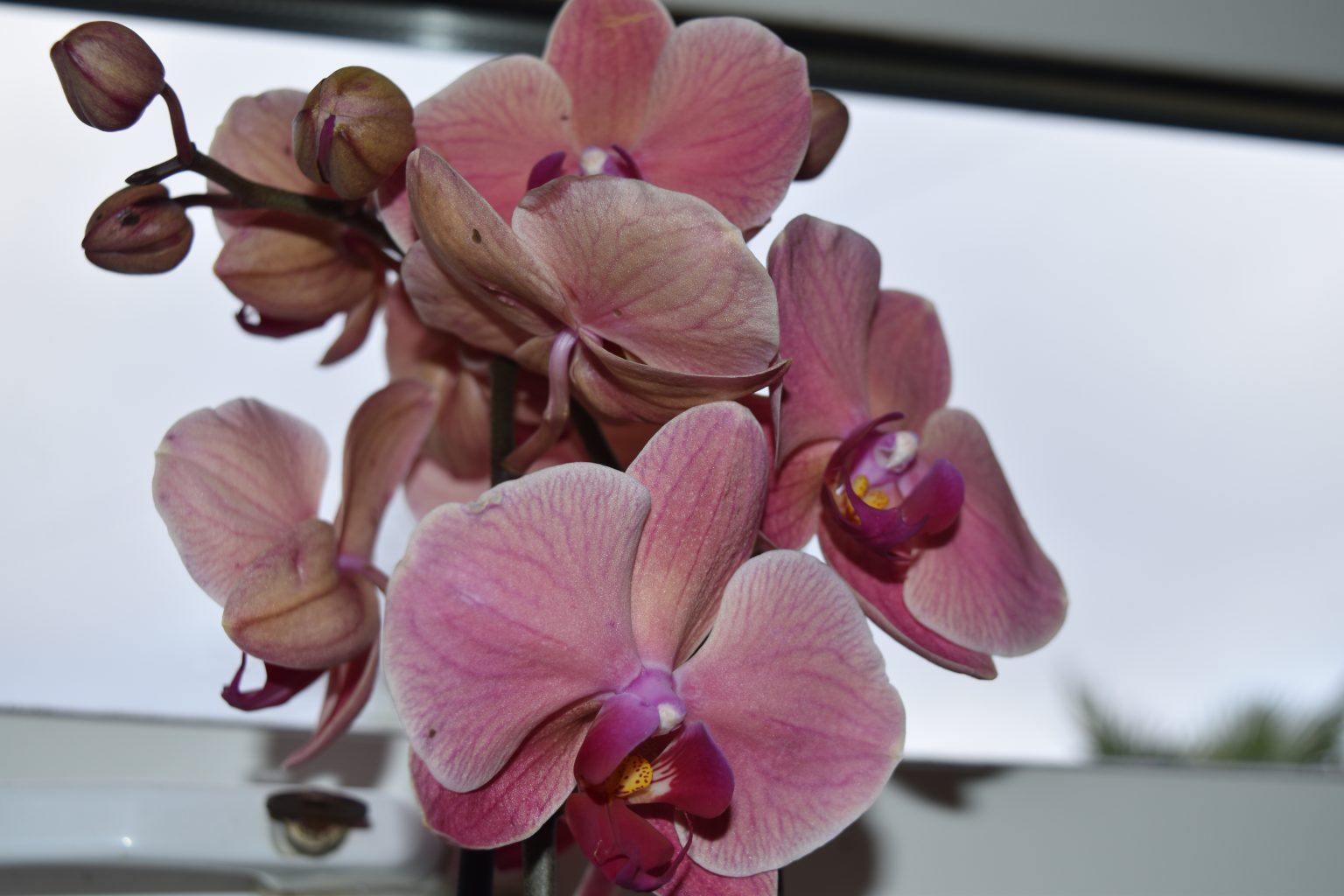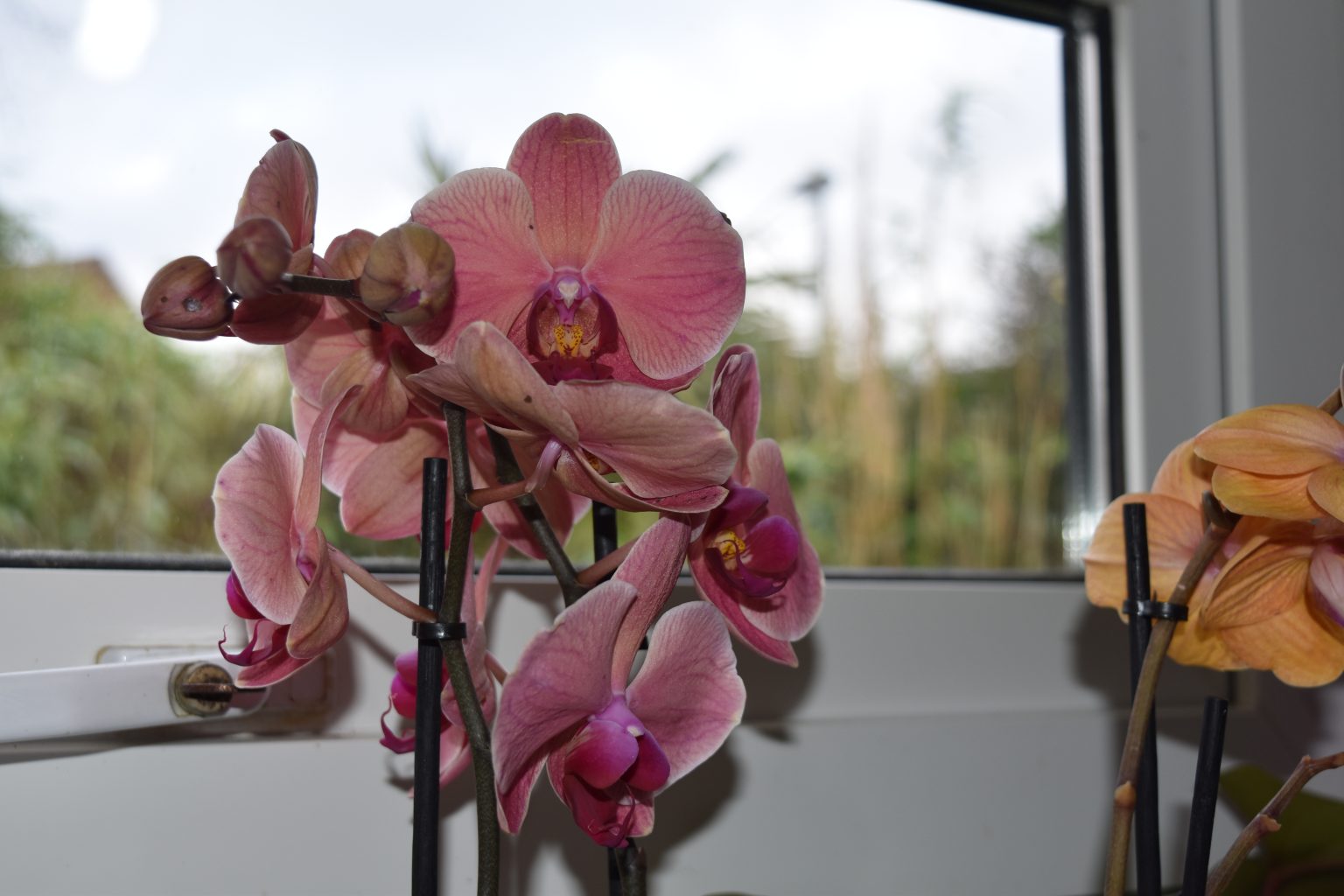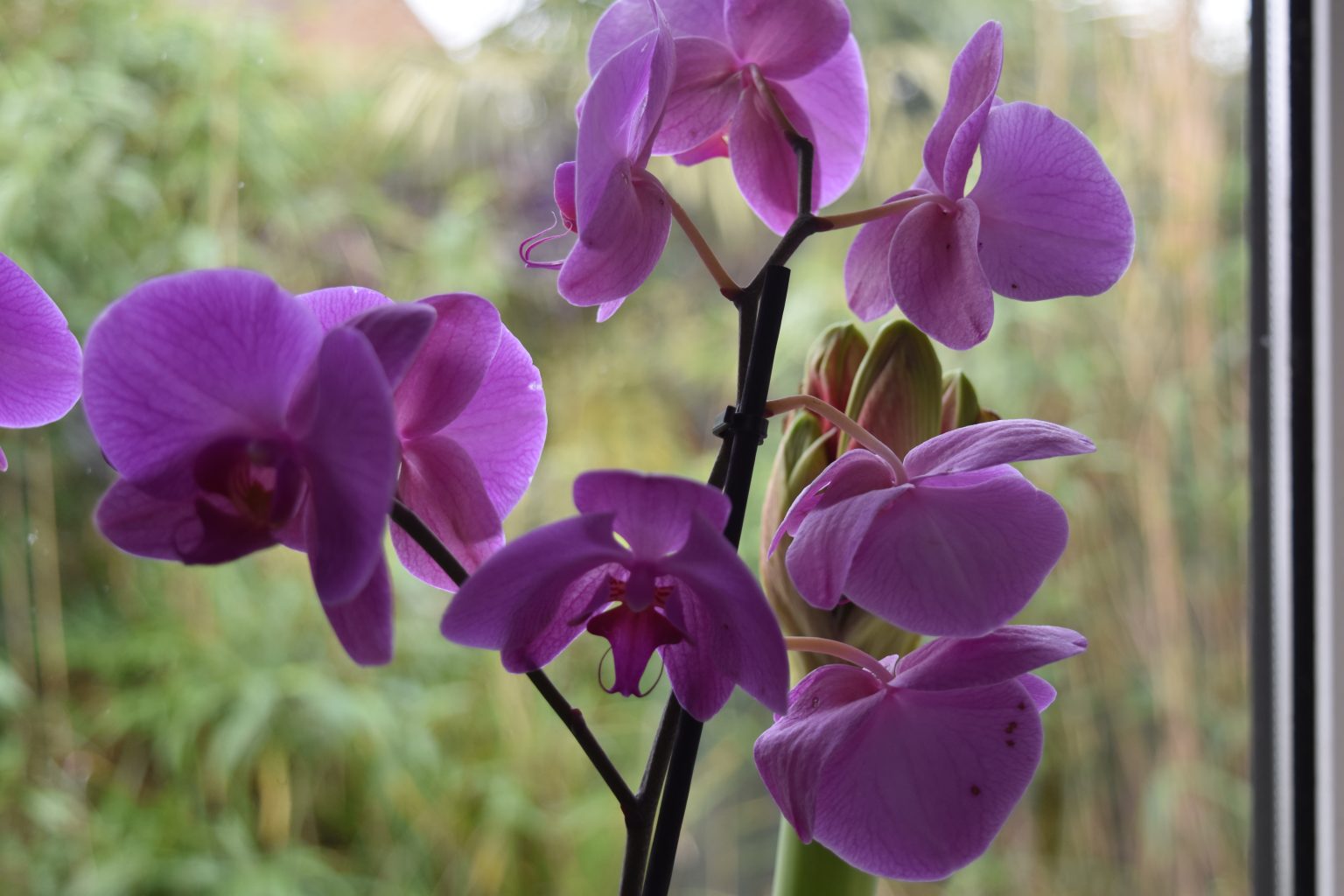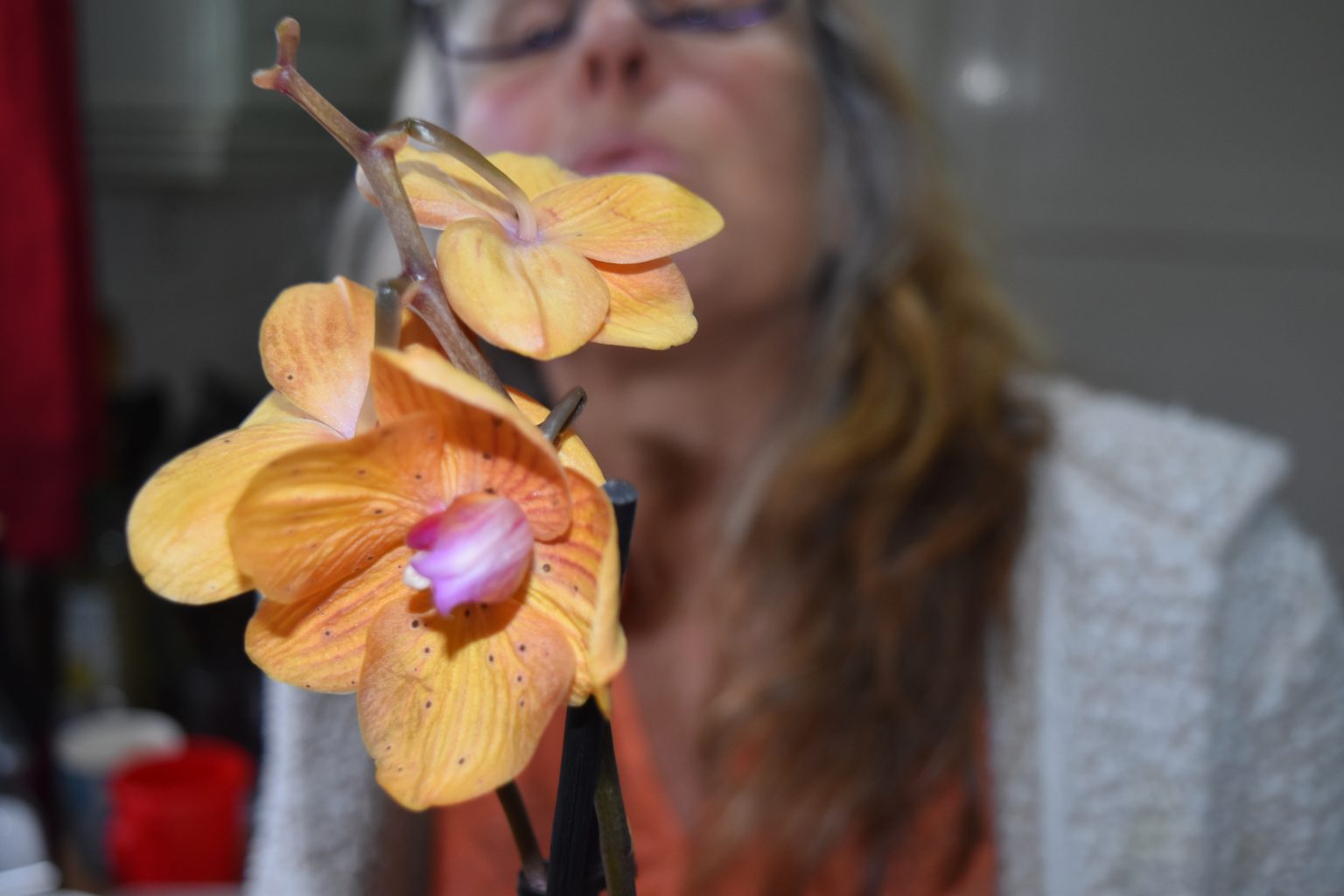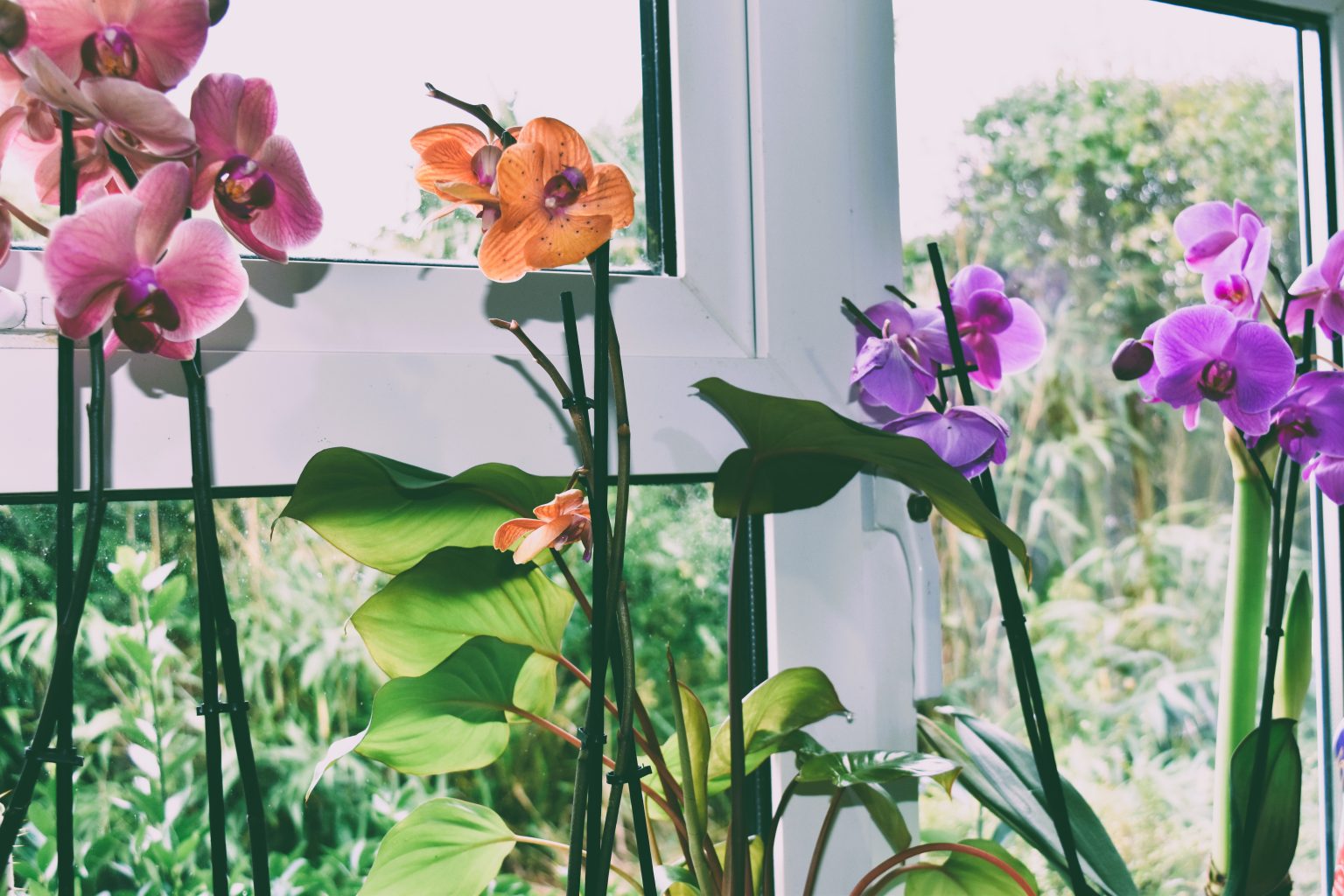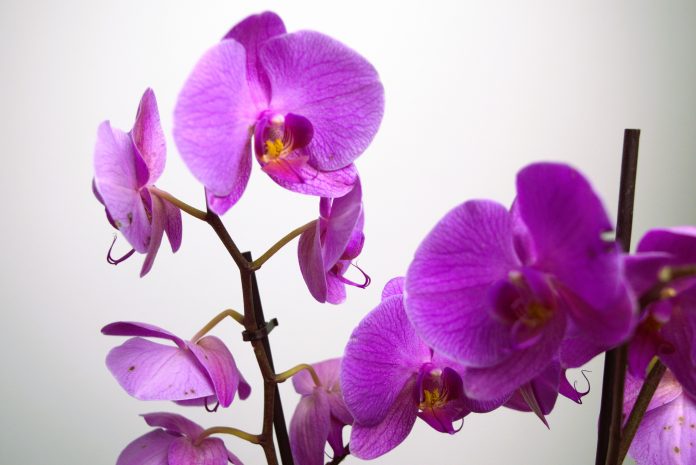How to grow orchids involves understanding the unique needs of these captivating plants. Orchids, belonging to a diverse family with various species and hybrids, require specific care considerations. Begin by researching the specific type of orchid you have, as their preferences can vary.
Orchids generally thrive in bright, indirect light, and maintaining the right temperature and humidity levels is crucial for their well-being. Watering should be done carefully, allowing the potting mix to nearly dry out before the next watering. Orchids are typically grown in specialized orchid mixes with good drainage in clear or semi-transparent pots for optimal root observation. Regular feeding with a balanced orchid fertilizer, proper repotting, and providing adequate air circulation are essential components of orchid care. Additionally, be attentive to signs of stress, pests, or diseases, intervening promptly for the plant’s health. Some orchids may experience resting periods or have symbiotic relationships with mycorrhizal fungi, adding to the intricacies of their cultivation.
Overview
Orchids belong to the family Orchidaceae, one of the largest families of flowering plants. Orchids are diverse and can be found in almost every habitat on Earth, except for deserts and glaciers. They are known for their unique and often intricate flowers.
Orchids are generally considered perennial plants. The term “perennial” refers to plants that live for more than two years, and orchids can live for many years with proper care. Orchids are known for their longevity, and some species can survive and bloom for several decades under suitable growing conditions.
While the term “perennial” is often associated with plants that endure winter and continue to grow in subsequent years, orchids, particularly tropical orchids, may not follow the same seasonal patterns as temperate perennial plants. Instead, they may have periods of active growth, blooming, and dormancy or resting phases.
It’s important to note that the lifespan and blooming patterns of orchids can vary depending on the specific species or hybrid, environmental conditions, and the care provided. Some orchids may have specific dormancy requirements, while others may bloom continuously. Understanding the natural growth cycle of the particular orchid you are cultivating is essential for providing the appropriate care and ensuring its longevity.
Key characteristics of orchids
- Epiphytic Nature: Many orchids are epiphytes, meaning they grow on other surfaces such as trees or rocks. They don’t harm the host but use them for support. Epiphytic orchids obtain nutrients and moisture from the air and rain.
- Terrestrial Varieties: While many orchids are epiphytic, some are terrestrial, meaning they grow in soil. Terrestrial orchids can be found in a variety of environments, including grasslands and forests.
- Specialized Reproductive Structures: Orchids have specialized reproductive structures, including a unique lip (labellum), which serves as a landing platform for pollinators. The intricate design of orchid flowers often plays a role in attracting specific pollinators.
- Bilateral Symmetry: Orchid flowers typically exhibit bilateral symmetry, meaning they can be divided into two symmetrical halves along a single plane.
- Pseudobulbs: Some orchids, such as those in the Cattleya genus, have pseudobulbs—swollen, bulb-like structures that store water and nutrients. Pseudobulbs help these orchids survive periods of drought.
- Diverse Habitats: Orchids can be found in a wide range of habitats, from tropical rainforests to temperate woodlands and even alpine meadows. Their adaptability to different environments contributes to the vast diversity within the orchid family.
- Mycorrhizal Relationships: Many orchids form symbiotic relationships with mycorrhizal fungi. The fungi assist the orchids in nutrient absorption, especially during their early stages of growth.
- Longevity: Orchids can be long-lived plants. Some species can survive for decades, and certain orchids have been known to live for over a century.
Orchids are highly valued for their unique and often exotic appearance, making them popular as ornamental plants. While some orchids can be challenging to grow due to their specific requirements, many varieties, such as Phalaenopsis (moth orchids), are well-suited for cultivation as houseplants.
Selecting Orchids
Choose orchid varieties suitable for your growing conditions. Phalaenopsis (moth orchids), Dendrobium, and Cattleya are popular and relatively beginner-friendly choices.
There are numerous orchid genera and species, each with its unique characteristics and beauty. The term “best” often depends on personal preferences, growing conditions, and the experience level of the grower. However, here are some popular orchids that are widely appreciated for their beauty and adaptability:
Phalaenopsis (Moth Orchids)
- Often recommended for beginners due to their ease of care.
- They come in a wide range of colors and patterns.
- Phalaenopsis orchids have long-lasting blooms.
Cattleya Orchids
- Known for their large, showy flowers and delightful fragrance.
- Popular in corsages and cut flower arrangements.
- Requires more light than Phalaenopsis.
Dendrobium Orchids
- Diverse group with various species and hybrids.
- Some have fragrant flowers.
- Requires bright light and a distinct dormancy period for some varieties.
Oncidium Orchids (Dancing Lady Orchids)
- Feature multiple small flowers resembling dancing figures.
- They are known for their vibrant and colorful displays.
- Oncidiums generally prefer intermediate to warm temperatures.
Vanda Orchids
- Often grown in hanging baskets or mounted on slabs.
- Large, showy flowers with a wide range of colors.
- Requires bright light and high humidity.
Miltoniopsis (Pansy Orchids)
- Known for their pansy-like flowers and pleasant fragrance.
- They prefer cooler temperatures compared to some other orchids.
- Requires high humidity.
Cambria Orchids
- Hybrid orchids created by crossing different genera, including Odontoglossum, Oncidium, and Miltonia.
- Known for their vibrant and long-lasting flowers.
Lady’s Slipper Orchids (Paphiopedilum)
- Distinctive slipper-shaped pouches on the flowers.
- Generally considered easier to grow than some other orchids.
- They prefer moderate light and well-draining soil.
Brassia Orchids (Spider Orchids)
- Named for their long, spidery flower shapes.
- Unique and fascinating appearance.
- Requires bright, indirect light.
Cymbidium Orchids
- Feature long-lasting sprays of flowers.
- Suitable for cooler growing conditions.
- Popular for outdoor cultivation in temperate climates.
When choosing orchids, consider factors such as the level of care you can provide, the growing conditions in your environment, and your aesthetic preferences. Additionally, it’s helpful to research the specific care requirements of the orchid species or hybrid you choose, as different types may have varying needs for light, temperature, and humidity.
Light/clear pots
- Orchids generally prefer bright, indirect light. Avoid direct sunlight, especially during the hottest part of the day.
- Phalaenopsis orchids can adapt to lower light conditions than some other varieties.
Using see-through or clear pots for orchids has several benefits, primarily related to the unique requirements of these plants:
Root Inspection
- Orchids are epiphytic plants, and their roots are adapted to grow in the open air rather than in soil. Clear pots allow you to inspect the health of the orchid’s roots without disturbing the plant. Healthy orchid roots should be green or white, while dark or mushy roots may indicate issues like rot.
Photosynthesis
- Orchid roots can undergo photosynthesis. Transparent pots enable light to penetrate the potting medium, reaching the outer layer of roots and supporting this process. This is particularly important for orchids that have green roots.
Aeration
- Orchid roots benefit from good aeration. Clear pots allow you to monitor the condition of the potting mix and the air circulation around the roots. Adequate aeration helps prevent issues like root rot caused by poor drainage.
Monitoring Moisture Levels
- Clear pots make it easier to gauge moisture levels in the potting mix. You can observe whether the mix is drying out appropriately between waterings, preventing overwatering or underwatering.
Temperature Sensitivity
- Orchid roots are sensitive to temperature changes. Clear pots can help you assess if the roots are getting too hot or too cold. If the roots are exposed to direct sunlight and overheating, you can take measures to protect them.
Aesthetic Considerations
- Some orchid enthusiasts appreciate the aesthetic aspect of clear pots, as they allow for a better view of the entire plant, including the roots. This can be particularly attractive when displaying orchids in decorative arrangements.
Education and Learning
- Clear pots provide an educational benefit, especially for beginners learning about orchid care. Being able to see the roots and their interaction with the potting medium helps individuals understand the unique growth habits of orchids.
It’s important to note that while clear pots have these advantages, they also expose the roots to light, which may not be suitable for all orchid species. Some orchids have roots that prefer darkness, and in such cases, you may use opaque or semi-transparent pots to shield the roots from excessive light exposure. The choice of pot type should align with the specific needs of the orchid species you are growing.
Temperature
- Most orchids prefer temperatures between 60-80°F (15-27°C) during the day and a slightly cooler range at night.
- Provide adequate ventilation to prevent stagnant air.
Humidity
- Orchids generally prefer high humidity. If your environment is dry, use humidity trays, mist the air around the orchids, or use a humidifier.
Watering
- Orchids should not be kept constantly wet. Water when the potting mix is nearly dry.
- Use room temperature water. Allow excess water to drain freely, and never let orchids sit in standing water.
Potting Mix
- Orchids typically do not grow in soil. Use a specialized orchid mix that provides good drainage. Common components include bark, sphagnum moss, and perlite.
Potting and Repotting
- Repot orchids every 1-2 years or when the potting mix breaks down. Use the appropriate size pot.
- Be gentle with the orchid’s roots, and avoid burying them too deeply in the potting mix.
Fertilizing
- Use a balanced orchid fertilizer at half-strength every 2-4 weeks during the growing season.
- Reduce or stop fertilizing during the dormant or resting period.
Air Circulation
- Good air circulation helps prevent fungal issues. Avoid overcrowding plants.
- Use fans if necessary, especially in humid environments.
Dormancy and Resting Period
- Some orchids go through a natural dormancy period. Adjust watering and feeding accordingly.
- Phalaenopsis, for example, do not have a true dormancy period but may have a resting phase.
Orchids that commonly undergo a resting period
Cymbidium Orchids:
- Cymbidiums typically have a rest period after their flowering season, usually during late fall or winter. During this time, they benefit from reduced watering and cooler temperatures.
Dendrobium Orchids:
- Many Dendrobium species, especially those with cane-like pseudobulbs, have a rest period. This usually occurs after they have completed their growth and blooming cycle. Reduce watering and provide slightly cooler temperatures during this time.
Miltoniopsis Orchids (Pansy Orchids):
- Miltoniopsis orchids, often referred to as pansy orchids, may experience a rest period after flowering. During this time, it’s advisable to reduce watering and provide cooler temperatures.
Oncidium Orchids:
- Some Oncidium species and hybrids have a natural resting period after blooming. Reduce watering and adjust temperature conditions during this phase.
Brassocattleya (Brassavola x Cattleya) Orchids:
- Many Brassavola and Cattleya hybrids may have a rest period. After flowering, reduce watering and provide a short period of cooler temperatures.
Laelia Orchids:
- Laelia orchids, which are closely related to Cattleya, often have a rest period. This typically occurs after blooming, and during this time, you can reduce watering and adjust temperature conditions.
It’s important to note that not all orchids go through a traditional resting period, and the need for a rest can vary even within a specific genus or species. Some orchids, such as Phalaenopsis (moth orchids), do not have a pronounced dormancy phase. Understanding the natural growth cycle of your orchid will help you provide the appropriate care during rest periods, promoting overall health and future blooming.
Always consider the specific requirements of the orchid species or hybrid you are growing and adjust your care practices accordingly.
Pest and Disease Control
- Monitor for pests like spider mites and scale. Treat promptly if detected.
- Maintain good orchid hygiene to prevent disease.
Support and Staking
- Provide support for tall flower spikes using stakes. Use clips or ties that won’t damage the stem.
Patience
- Orchids might not bloom continuously. Be patient, and continue to provide proper care.
Observation
- Regularly inspect your orchids for any signs of stress, pests, or diseases. Early detection allows for timely intervention.
Remember that orchids are diverse, and different species or hybrids may have slightly different requirements. Observing and understanding the specific needs of your orchids will contribute to their overall health and successful cultivation.
